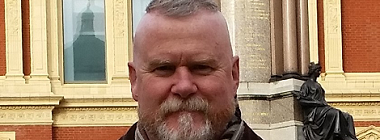Forthcoming Books
Over the coming years I will be writing a number of books that are all to do with military history, many of which will specifically coincide with the one hundredth anniversary of the First World War.
Most of them are local history books and cover towns in Essex, Kent, County Durham, City of London, Channel Islands and France. Watch this space for the dates when they will be available in the shops and on line via Amazon.
There will also be books on the Second World War, specifically on the City of London, and the county of Kent, the disaster at Slapton Sands, the Holocaust, the raid on Dieppe, the Holocaust, War time Spies, and many more. The full list of my forthcoming books is listed below.
Take a look to see if there is something that takes your fancy.
History of the Police use of Firearms
This book looks at the history of the Police use of firearms from the inception of policing to the current day. The world has changed greatly in that time, where the image of the bobby on the beat, maybe holding a pistol that could fire six bullets, is now a combination of Rambo and Robocop. The story will look closely at some of the more high profile Police related shootings of modern times, as well as Police officers who have themselves been killed by gunmen. The author was himself a firearms officer for nearly nine years during his Police career, spending nearly eight years as part of a specialist firearms unit, that dealt with all kinds of firearms related incidents, allowing him to draw any many of those experiences, as well as those of his colleagues whom he worked with.
It makes for an interesting read, written by somebody who was involved in more than a hundred firearms incidents throughout the 1990’s. A first hand account of what it was like to be part of the thin blue line, when a split second decision could literarily mean the difference between life and death.
Due for release date: March 2024.
Operation North Pole
“Operation North Pole.” It was a counter intelligence operation set up by the Abwehr, the German military intelligence, during the Second World War. Some 54 agents of Britain’s Special Operations Executive, most of whom were Dutch nationals, were parachuted in to Holland to undertake clandestine operations and assist the Dutch resistance movement. Each one of them was captured soon after they landed, then interrogated before being executed by members of the Gestapo. This went on unabated between August 1940 and April 1943.
Each time an agent was captured his radio transmitter set was utilised by the Abwehr, after they had established the agents’ individual codes. This then allowed them to transmit and receive messages form the SOE. Even though it was obvious by November 1942, that the Dutch agents, if they were still alive, were in German hands, more agents were still sent. The question is, why were they still being sent and knowingly sacrificed.
The fact that nobody appeared to have picked up on what was going on from either the Dutch or British sides, is just absolutely staggering. The operation was only shut down when the Abwehr’s Major Hermann Giskes sent a message to the SOE on 1 April 1944, playfully bemoaning the fact that there had been a distinct lack of agents arriving in Holland in recent times.
There is an argument that the Operation was set up intentionally by the SOE to make the Germans believe that any invasion of German occupied Europe, was going to take place in Holland and not on the beaches of Normandy.
The problem with this argument was that a similar scenario occurred in France, when a British agent with the code name of Prosper, also working for the Special Operations Executive, was captured on 24 June 1943, and executed, but not before the Gestapo had acquired his code and transmitted to the SOE pretending to be him. This led to the arrest of some 30 other SOE agents, who were either executed or met their deaths in concentration camps. This strongly suggests that this was down to poor operating procedures by the SOE rather than a pretence over the location of the intended invasion location of German occupied Europe.
An interesting story, and one which regardless of which version is correct, saw some 80 SOE agents sent to their deaths.
Due for release date: TBA.
History of Stalag Luft III
Stalag Luft lll, doesn’t just focus on what history has recorded as the Great Escape it looks at the camps entire history from when it opened in March 1942 through to when it was liberated by Soviet forces in January 1945. This also includes visits paid to the camp by members of the Red Cross. The assistance the escapees were given by some of the camp guards. The camps two news papers, the Circuit and the Kriegie Times.
It also includes the full story of New Zealander, Group Captain Leonard Henry Trent VC, DFC, who for most authors is the forgotten man of the Great Escape despite being the seventy-seventh man to escape. The story looks at how close he came to being a posthumous recipient of the VC. His story is even more remarkable given that he was at the time of the escape unaware that he had been given the award.
I will look in detail at the man who came up with the plan, Squadron Leader Roger Bushell of the RAF, and Herbert Massey, the camps senior British officer, who authorised the escape. Group Captain Douglas Wilson, who was the man responsible for ensuring the British authorities were quickly made aware of the murder of 50 Allied prisoners of war. Bushell was one of those who escaped and who was of the 50 who were murdered
The book would also look at the previous escape in October 1943, when Eric Williams, Michael Codner and Oliver Philpot escaped from the camp and actually made it back to the UK.
There were many notable prisoners at Stalag Luft 111, which I will look at including, Czech pilot Josef Bryks, who escaped from 3 German POW camps, helped with the ‘Great Escape’ and ended the war a prisoner at Colditz Castle. He was awarded the British Empire Medal by the British Government for his war time exploits. Peter Stevens, by birth a German Jew, who had escaped Nazi Germany before the war, changing his name from George Franz Hein. He was awarded the Military Cross and managed to keep his true identity a secret from the Germans throughout the war. George Harsh of the Canadian Royal Air Force, and a member of the escape committee at Stalag Luft 111, but before the war he had been a medical student when was sent to prison in America for the murder of a grocer. Whilst in prison he saved the life of another prisoner by performing an emergency appendectomy on him. This resulted in him being pardoned by the Governor of Georgia. He returned to Canada where he joined the Royal Canadian Air Force, serving as a rear gunner. He was shot down and captured in 1942.
All of the well known aspects of the escape will also be included, as well as looking at how realistic and accurate the 1963 film, the Great Escape was.
The book would not be complete without looking at Paul Brickhill, an Australian fighter pilot, who was a prisoner at the camp from 1943 until liberation, who in 1950 wrote the book that went on to become the 1963 film, the Great Escape.
Due for release date: TBA.


